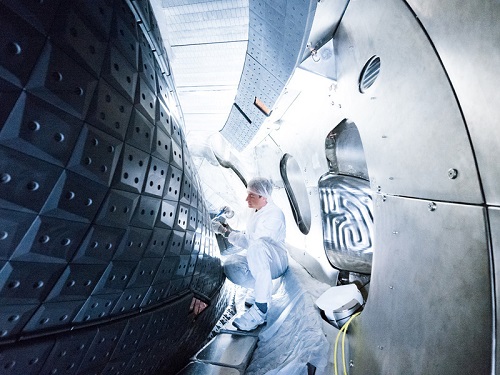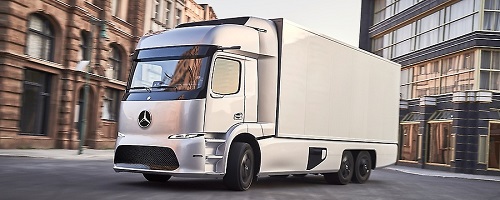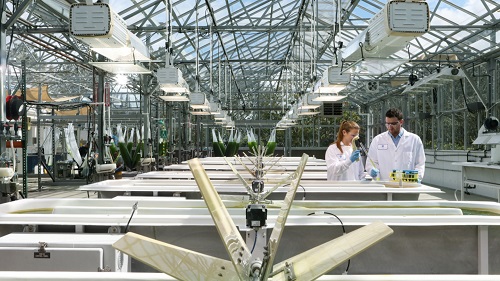By Alix Paultre, contributing editor
Energy development is a tricky business, complicated by factors from production logistics to politics. Because of the huge infrastructure investment and critical, life-and-death nature of modern power needs, the energy industry is less susceptible to change and more able to fight against it. But there is a dynamic and disruptive change happening right now as society migrates from fossil-based to “green,” low-footprint energy-generation systems.
The dissolution of even huge international, multibillion-dollar industries through disruptive change is nothing new. Beyond the old trope of carriages and buggy whips, a good example is the disappearance of film.
At one point, silver-coated sheets of plastic were how everything got done, from dental X-rays to publishing to IC manufacture. Kodak alone (not to disrespect Fuji and Agfa) made a profit of $2.5 billion in 1999 on revenue of almost $20 billion and employed more than 145,000 workers worldwide. Today, the film market — along with hundreds of companies that were involved in it and hundreds more that supported it — is gone.
Much the same could be happening in energy generation today. Not only the ways we generate energy, but also the ways that we use it, are changing radically. The dozen or so LED-based lamps in a typical modern home collectively use less energy than just a couple of old incandescents, and intelligent motion systems in refrigerators and other household appliances enable equally significant reductions in electricity consumption.
Intelligent embedded systems and advanced alternative energy technologies reinforce one another, leveraging their strengths and balancing their weaknesses. From better wind turbines and solar cells to intelligent grid management and the smart thermostat on the wall, the ways that we make and take energy are going green in a major way.
Nuclear energy
First, let’s get our definitions straight. For the purposes of this article, we will consider legacy fission-based nuclear power as not green because of the resultant waste. Even if the waste was not toxic, the mere fact that fission-based power generates waste that poses costly disposal and storage problems removes it from consideration.
Not so with fusion. The perennial tease, fusion has been touted as just 20 years out for more than 40 years, but newer technologies and improved techniques are making important gains. The most notable example is the progress made by the Wendelstein 7-X fusion project at the Max Planck Institute for Plasma Physics (IPP; Greifswald, Germany).
Last year saw the implementation of several major upgrades to the Wendelstein 7-X stellarator-type fusion reactor, which has been in operation since 2015. The improvements include new heating and measurement systems as well as the installation of more than 8,000 graphite wall tiles to protect the vessel walls at higher temperatures, allowing the structure to tolerate plasma discharges lasting as long as 10 seconds (Fig. 1 ). This is significant because it demonstrates that fusion research has progressed beyond events measuring mere fractions of a second.

Fig. 1: More than 8,000 graphite tiles protect the vessel walls of the Wendelstein 7-X stellarator, allowing the structure to tolerate plasma discharges lasting as long as 10 seconds. Image: Jan Michael Hosan.
One aspect of the German breakthrough is in the way that the stellarator manages its magnetic fields. The device avoids the traditional disadvantages of legacy tokamak reactors through the use of diverters, or slanted panels attached to the wall of the plasma vessel that align and manage the roiling boundary of containment. The diverters help protect the vessel walls by improving the purity and density of the plasma.
The project plans to reach discharges of up to 30 minutes and eventually to achieve continuous operation, possibly via another advanced vessel design.
Electric vehicles
While all the buzz is around EV battery life, the real progress — and the place that most advancements will be realized — is in the area of power electronics, both inside the vehicle and out. Inside, developers are working to improve power management via better drivetrain electronics; improved motor control; and advanced materials, ranging from wide-bandgap semiconductors under the hood to next-generation, lightweight composite materials in the body (monocoque, of course).
In the area of infrastructure, no aspect is more important to EV market penetration than fast charging (why doesn’t anyone say “recharging” anymore?), as it not only enables people to take trips with a reasonable expectation of “normal” station-break timing but also mitigates battery size issues. If you can “fill” your EV in 15 minutes at stations situated comfortably within your EV’s driving range, then any argument for a fossil-fuel vehicle boils down to visceral satisfaction in the volume and quality of the generated noise.
In Europe, the Ultra-E project, comprising energy companies, vehicle manufacturers, automotive suppliers, and public institutions, is developing fast-charging corridors through European Union countries to encourage EV development and adoption as part of the EU’s Connecting Europe initiative (Fig. 2 ). The facilities will be separated from one another by 120 km to no more than 150 km.

Fig. 2: The EU’s Ultra-E project is working with Allego and others to establish fast-charging corridors through Europe. Image: Allego.
The first sites opened in December 2017. Four Ultra-E fast chargers were installed in Kleinostheim, a town near Frankfurt am Main, Germany, near the A3 motorway at the Aschaffenburg-West exit. This spring, two of the four 175-kilowatt-capacity stations will be upgraded to 350 kW for even faster charging, and an additional, multistandard-compatible 50-kW charger will be added for small EVs and e-bikes. Eventually, the network will have 25 multilevel fast-charger stations: 12 in Germany, five in the Netherlands, four in Austria, and four in Belgium.
Smarter grid
The energy grid continues to evolve into something more intelligent, flexible, and reliable. Modern energy systems must take into account multiple sources, myriad loads, and a web of regulations. An improvement in any facet of smart-grid technology moves the ball forward very aggressively because this industry segment is highly price-driven, and green is most successful when it is cost-effective.
Grid storage is a hot-button issue because it is a needed core infrastructure for managing alternative energy such as solar and wind (geothermal is consistent enough not to be considered here). The argument for green energy is far weaker if the excess energy cannot be shifted to the places that it’s needed at the times it’s required.
Beyond the very public successes of Tesla’s microgrid storage efforts in Puerto Rico and Australia, notable solutions include a technology developed by Purdue University researchers to improve reflow batteries while also making them more cost-effective and environmentally friendly. The development promises an impact beyond grid storage as it would provide an alternative for recharging electric and hybrid vehicles in a process very similar to gasoline management today.
The team was led by John Cushman, Purdue distinguished professor of earth, atmospheric, and planetary science and a professor of mathematics (Fig. 3 ), who has co-founded a company called Ifbattery (IF-battery) to commercialize the technology. An Ifbattery would recharge electric or hybrid vehicles by replacing the spent fluid electrolytes with fresh fluid in a manner not only familiar to the user but flexible for the vehicle designer in terms of capacity and placement. The spent electrolyte would then be recycled, recharged, and reused, further reducing the battery’s ecological impact.

Fig. 3: Purdue professor John Cushman has founded a company to commercialize a membrane-free reflow battery that is more cost-effective and environmentally friendly than legacy reflow technologies. Image: John Cushman/Purdue.
An added advantage would be the ability to use existing underground piping, pumping, and retail systems, streamlining adoption and reducing service-side industry pushback, as the existing providers would have an integral role in the new technology.
Ifbattery’s membrane-free construction is at the heart of its cost-effectiveness and eliminates the problems related to membrane fouling. In addition, the non-toxic electrolyte expands the areas in which the solution can be deployed, from homes to vehicles to factories.
Electric vehicles
While all eyes are on consumer cars, the real markets (and initial battlefields) of EV adoption will be in fleet vehicles, with trucks most prominently in the news lately. Contrary to the popular image of the long-range cross-country driver, much truck traffic is on relatively short, fixed routes between depots. Long used inside of facilities and campuses for cargo or people movement, e-trucks and buses have finally arrived.
This isn’t just about the buzz surrounding Tesla’s semis, announced last year to great fanfare and with a shower of advance orders. Even though the announcement was truly historic, marking the first major inroad (pardon the pun) into the mainstream for electric trucks, Tesla’s customers will wait up to two years for delivery of the promised vehicle.
Other pending deployments include startup Proterra’s contract to provide 25 battery buses to the Los Angeles Department of Transportation and the Los Angeles County Metropolitan Transportation Authority’s recent order for electric buses from New Flyer. E-trucks from China-based BYD, meanwhile, are being deployed at California ports.
But the poster child for large-scale e-truck commercialization is arguably Mercedes, whose vehicle started shipping last February and is on the streets now (Fig. 4 ). The Mercedes-Benz electric truck holds its own against similar internal-combustion-engine-powered trucks in every respect, even its weight. The triple-axle vehicle has a permissible gross weight of 26 tons and has a powered rear axle with electric motors adjacent to the wheel hubs, with a maximum output of 125 kW and a torque of 500 newton-meters on each side.

Fig. 4: The Mercedes-Benz electric truck holds its own against similar internal-combustion-engine-powered trucks and is on the streets now. Image: Mercedes-Benz.
The lithium-ion battery pack has a capacity of 212 kWh for a range of up to 200 km, with predictive charge management, proactive predictive powertrain control, and other energy-management systems ensuring maximum efficiency. The trucks also use a novel solution, called FleetBoard for Urban Distribution, that connects the telematics system with the drive control for flexible scheduling, ensuring optimum fleet utilization.
Synthetic fuels
No matter how good EVs get, there will be customers and applications that need some type of fuel-based vehicle solution to serve where EVs aren’t the best way to address a problem or when the logistics severely restrict external support. While reflow batteries and fuel cells may be able to address those issues, synthetic fuels can do so while also being almost 100% compatible with the existing fueling, storage, transport, and retail infrastructure.
ExxonMobil and Synthetic Genomics recently announced a breakthrough in advanced biofuels achieved by modifying an algae strain, Nannochloropsis gaditana , to more than double oil expression without major side effects (Fig. 5 ). Using a genetic switch to regulate the carbon-to-oil conversion increased the algae’s oil content from 20% to more than 40% while sustaining algae growth.

Fig. 5: ExxonMobil and Synthetic Genomics genetically modified an algae strain to double its oil content without suppressing its growth. Image: Synthetic Genomics.
The development addresses the long-standing issue of cost-effectiveness in volume biofuel production. Restricting nutrients like nitrogen can increase oil production in algae but at the expense of photosynthesis, negatively affecting algae growth. Maintaining growth while increasing oil content would make algae-based fuel superior to traditional biofuels because the feedstock thrives in salt water and under harsh environmental conditions. In addition to being able to use existing transport and storage infrastructure, fuel from algae could be processed in existing refineries with little modification, producing gas that to the user would be no different from existing, fossil-based products.
Looking forward
This year will no doubt bring its share of interesting developments, unforeseen events, cool technology, and disruptive announcements. Look for news from the usual suspects — EVs, the smart grid, and consumer products — but also be open to the development that upsets the apple cart and renders everyone’s predictions (even mine) moot.
Advertisement
Learn more about Electronic Products Magazine





